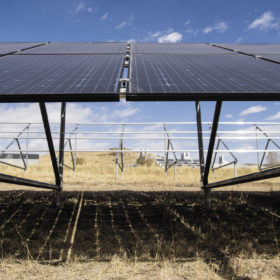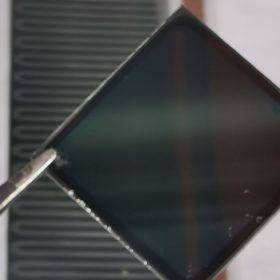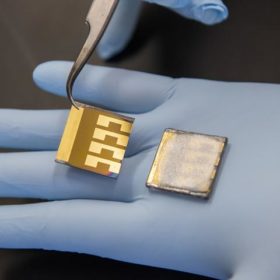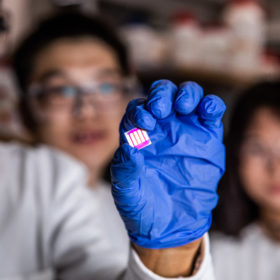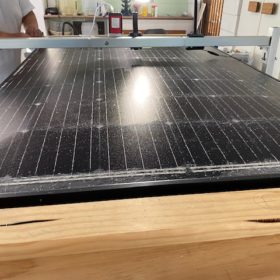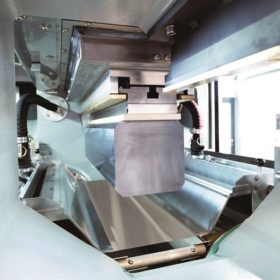Building on bifacial momentum
Getting the most out of a bifacial module requires a rethink at almost every level of system design and the industry is hungry for field data generated by such systems to better inform energy yield modeling and define the best approaches to maximizing yield at minimal cost. In May, the U.S. National Renewable Energy Laboratory began a three-year study into bifacial performance which is beginning to yield results.
A new solution for perovskite stability
By tweaking the chemical composition of the material to create a ‘triple’ perovskite, scientists at the U.S. National Renewable Energy Laboratory say they have overcome one of the technology’s inherent stability issues and fabricated a perovskite cell which achieved 27% efficiency in a tandem format with a silicon device.
International consortium claims 25% efficiency for perovskite CIGS solar cell
Researchers led by Belgian institute imec claim to have achieved the result with a 1cm² perovskite tandem solar cell. The result tops the 24.6% efficiency the consortium announced in September 2018. The cell’s developers are now aiming for 30%.
Preventing lead leakage in perovskite cells
A U.S. research group has used a lead-absorbing material to coat the front and rear of a perovskite solar cell stack. The researchers claim the films captured 96% of lead leakage when the cells were damaged.
A quantum dot solar cell with 16.6% efficiency
Scientists at Australia’s University of Queensland have set a new world efficiency record for a quantum dot solar cell. The group fabricated a 0.1cm² device from a perovskite material and measured power conversion efficiency at 16.6%. The record has been verified by the United States National Renewable Energy Laboratory.
Discussing bifacial project economics
Bifacial solar module technology will find beneficial application in a significant number of solar energy power plants, according to a technical assessment conducted by ArcVera Renewables. While advertised 25% or greater gains in energy yield are unlikely for most projects, typical project energy production gains are 3-10%. Analysis finds that many projects under the scrutiny of informed technical due diligence, proper measurement and site design, will reap meaningful net present value. Although financing institutions have recently not awarded significant debt financing value to bifacial projects, full credit for bifacial benefits are expected to accrue rapidly, as experience and market penetration increases.
Innovative PV modules at Intersolar San Diego
In sunny San Diego for Intersolar 2020, we’re seeing a new idea for tracking rooftop solar modules, diodes moving to cell level, two types of building-integrated solar products and some solar hot water.
Solarwatt’s Vision glass-glass PV passes Australian cyclone testing
Solarwatt’s Vision glass-glass solar PV modules have pushed the technology’s resilience even further after passing cyclone testing in Darwin, Australia.
MIT researchers put slimmer silicon back on the table
With solar grade polysilicon prices having plummeted in recent years, cutting down on consumption of the material has not been a priority. But strategies exist and significant savings can be made through deploying thinner wafers that use less silicon, insists a new paper published by MIT and NREL. And as manufacturers are increasingly hitting dead ends on other routes to cost reduction, this option could be back on the table for many.
Solar cells from space are on the way
A team at the U.S. National Renewable Energy Laboratory has come up with a new process that would reduce the production cost of highly expensive – and highly efficient – gallium arsenide cells.
